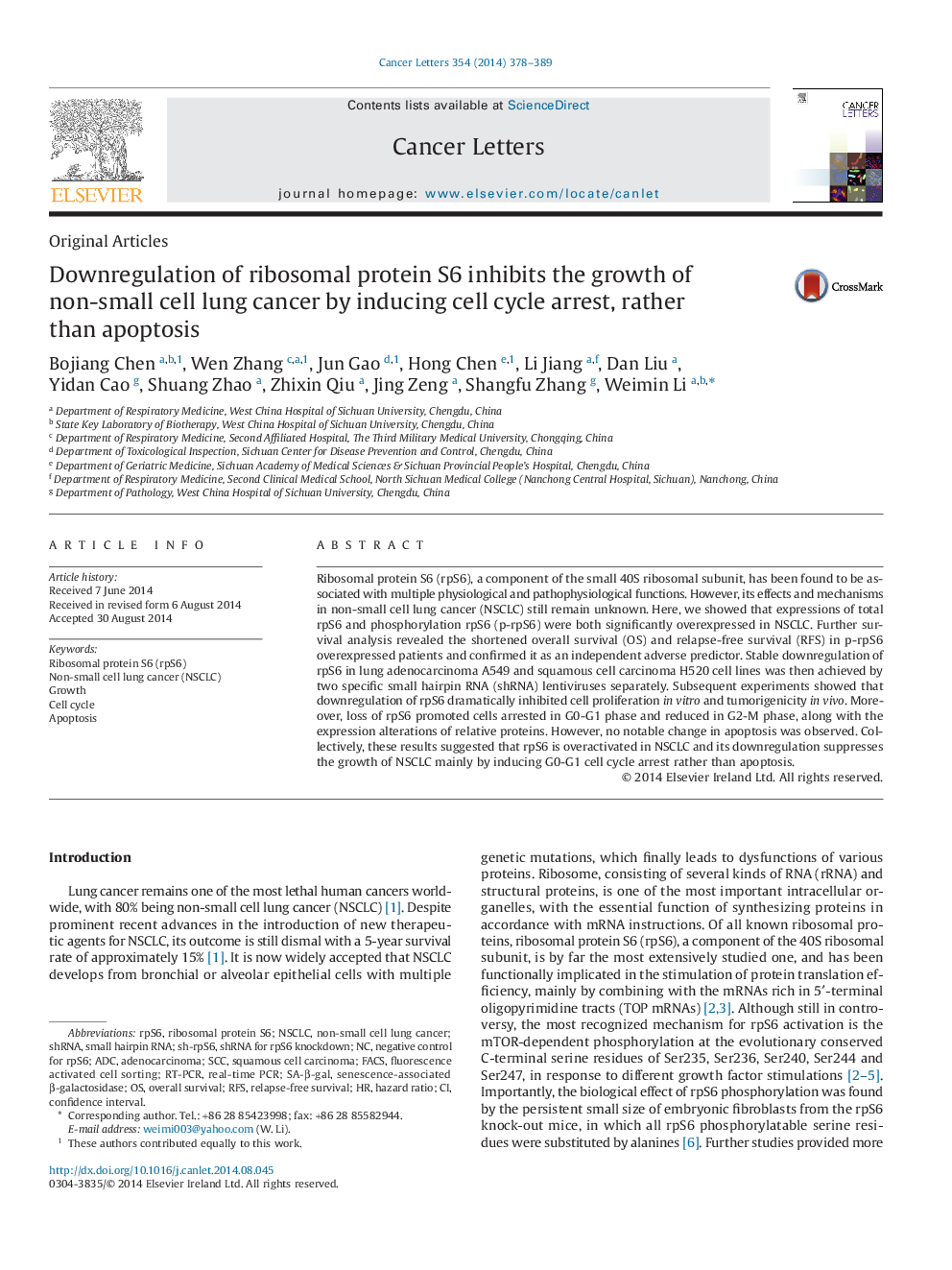| Article ID | Journal | Published Year | Pages | File Type |
|---|---|---|---|---|
| 2112597 | Cancer Letters | 2014 | 12 Pages |
•The expressions of rpS6 and p-rpS6 in NSCLC were detected from both clinical tissues and cell lines, with IHC stainings and Western blot assays.•The clinical significance of rpS6 and p-rpS6 was confirmed from the patients' survival analysis.•The effects of rpS6 in NSCLC were explored both in vitro and in vivo.•The mechanism of rpS6 in NSCLC was clarified with relative full validation.
Ribosomal protein S6 (rpS6), a component of the small 40S ribosomal subunit, has been found to be associated with multiple physiological and pathophysiological functions. However, its effects and mechanisms in non-small cell lung cancer (NSCLC) still remain unknown. Here, we showed that expressions of total rpS6 and phosphorylation rpS6 (p-rpS6) were both significantly overexpressed in NSCLC. Further survival analysis revealed the shortened overall survival (OS) and relapse-free survival (RFS) in p-rpS6 overexpressed patients and confirmed it as an independent adverse predictor. Stable downregulation of rpS6 in lung adenocarcinoma A549 and squamous cell carcinoma H520 cell lines was then achieved by two specific small hairpin RNA (shRNA) lentiviruses separately. Subsequent experiments showed that downregulation of rpS6 dramatically inhibited cell proliferation in vitro and tumorigenicity in vivo. Moreover, loss of rpS6 promoted cells arrested in G0-G1 phase and reduced in G2-M phase, along with the expression alterations of relative proteins. However, no notable change in apoptosis was observed. Collectively, these results suggested that rpS6 is overactivated in NSCLC and its downregulation suppresses the growth of NSCLC mainly by inducing G0-G1 cell cycle arrest rather than apoptosis.
